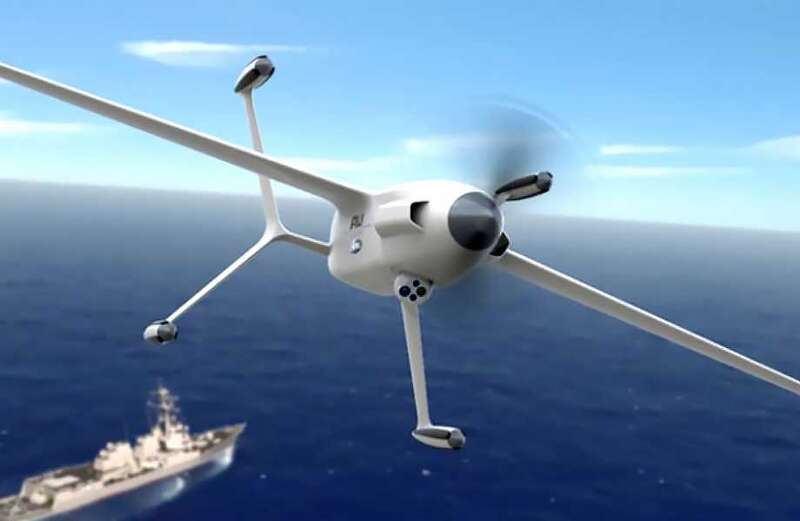DEFENSE experts are pushing ahead with an experimental weaponized X-plane that can take off, hover, and land vertically.
Testing of the long-endurance aerial masterpiece - that does not need a runway, pilots or support teams - is expected to take off in early 2026.




The Defense Advanced Research Projects Agency (DARPA) has been seeking the perfect X-plane design since 2013.
DARPA is a research and development agency of the United States Department of Defense.
The aim of its X-plane project is to create a new lightweight uncrewed aircraft for the U.S. military that can be launched from a ship, and haul a large amount of weapons - or "payload" - for battle.
 Andrew Tate 'tried to lure ex-Playboy model to Romanian lair' before his arrest
Andrew Tate 'tried to lure ex-Playboy model to Romanian lair' before his arrest
Experimental aircraft, or X-planes, are built for a wide range of research purposes – technology or concept demonstrators, unmanned test missiles, and even as prototypes, said Nasa, which has also overseen the development of various remotely-piloted X-planes.
Usually shrouded in secrecy, X-planes emerged in the US during the mid-1940s.
We expect the [X-plane] will be augmented by other technologies such as advances in sensors, electronic warfare and artificial intelligence.
Steve Komadina
Between 1959 and 1968, the first X-15 hypersonic rocket-powered aircraft exceeding Mach 6 and altitudes above 250,000 feet in a joint program involving Nasa, the U.S. Air Force and the U.S. Navy.
"Knowledge gained during X-15 missions influenced the development of future programs such as the space shuttle," said Nasa.
DARPA announced late last month that it was considering innovative X-plane designs from an array of companies to benefit the Navy, and other services.
WINNING DESIGNS
Its program, known as ANCILLARY, is focusing on six design concepts.
AeroVironment, Griffon Aerospace, Karem Aircraft, Method Aeronautics, Northrop Grumman, and Sikorsky are the six defense and aerospace contractors bidding for the ambitious project.
The idea is to choose a winning design for a long-endurance uncrewed X-plane which is low-weight, can take a large payload, and make vertical take-offs and landings (VTOL).
“The goal of ANCILLARY is to increase small vertical take-off and landing uncrewed aerial system (UAS) capabilities by a factor of three over the current state-of-the-art flying today,” said Steve Komadina, DARPA program manager.
 Inside US's most remote town 2.4 miles from Russia where only 77 people live
Inside US's most remote town 2.4 miles from Russia where only 77 people live
PAYLOAD
He said the agency was searching for innovative ways to increase payload weight and the range and endurance of small, ship-launched X-planes - which are operated remotely.
All six firms are currently refining their designs for the drones, for example by concentrating on reducing system risks, and conducting component and configuration hover testing.
"At the end of this 10-month phase, teams will submit competitive proposals for phase II detailed design, fabrication, and flight testing," said DARPA.
"The project is expected to culminate with X-plane flight tests starting in early 2026."
“A network of these small uncrewed aerial systems can be launched from a ship to provide beyond-line-of-sight F2T2 (find, fix, track, target) of surface vessels of interest for the ship commander,” said Komadina.
He said the U.S, military was searching for innovative ways to increase payload weight and range/endurance of small, ship-launched UAS.
For example, their propulsion, and controls while also removing the need for special infrastructure.
“We expect the operational capabilities provided by ANCILLARY will be augmented by other technologies being developed within the Department of Defense’s various research and engineering organizations, such as advances in sensors, electronic warfare, and especially autonomy and artificial intelligence,” said Komadina.
NAVY
The testing phase will check whether the drones can be deployed and retrieved from Navy ships without the large mechanical launchers and landing or recovery equipment used at present.
"The small UAS will need to take off and land vertically – like a helicopter – from ship flight decks and out-of-the-way land locations in most weather conditions but fly missions like a very efficient winged aircraft while carrying significant payload when needed," said the agency.
“Northrop Grumman’s expertise is built on thousands of flight hours of ship-based operational experience with the U.S. Navy," said Christopher Harris, program manager, ANCILLARY, Northrop Grumman.
The firm is a leading global aerospace and defense technology company.
WILDCAT
AeroVironment said its company’s design, Wildcat, was made to meet challenging conditions from a range of Navy ships.
"Wildcat meets DARPA’s objectives for a 450 nautical mile (nmi) mission radius and over 12 hours of endurance on station with 60 lbs of payload," the firm said.
"Wildcat exceeds program objectives for sea state recovery and cruise speed, with the ability to operate in high sea states and winds, and dash over 100 knots to quickly cover long distances over sea or land."
Sikorsky’s battery-powered design props itself on its tail while on the ground, reported Live Science.
It also takes off like a helicopter, with its propellers facing upward, then tilts forward to fly through the air horizontally like a plane.
"Karem Aircraft, meanwhile, has put forward a heavy-fuel-driven craft that uses a tilting rotor to fly straight up in the air and hover when the rotor is in the upward position, then propel the aircraft forward at high speeds when the rotor is in the forward position," the website added.



































